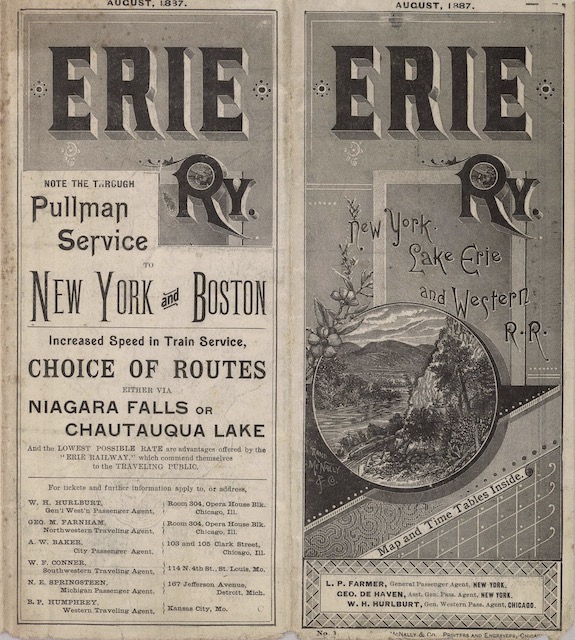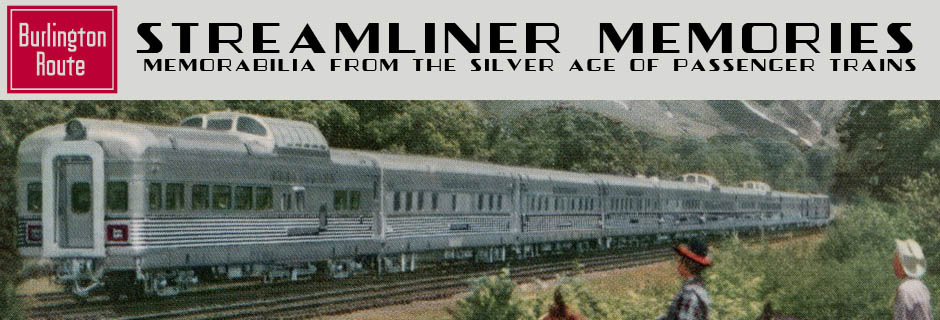Due to repeated bankruptcies, what became known as the Erie Railroad after 1895 was previously known as the New York & Erie (1832-1861), the Erie Railway (1861-1878), and the New York, Lake Erie & Western (1878-1895). One of its problems was that it had been originally built to 6-foot gauge, supposedly more stable but making interchange with other railroads difficult. The cost of converting it to standard gauge sent it into one of its bankruptcies.
 Click image to download a 13.1-MB PDF of this brochure, which is from the David Rumsey map collection.
Click image to download a 13.1-MB PDF of this brochure, which is from the David Rumsey map collection.
As of 1887, the Erie was trying to compete with the New York Central between New York City and Buffalo and the Midwest. However, it didn’t actually go into New York City, instead ending at terminals across the Hudson River in Jersey City. It also went over the Appalachian Mountains rather than following a largely water-level route. Because the New York Central went north for 140 miles before turning west at Albany, its route to Buffalo was 18 miles longer than the Erie’s, but the Central’s fastest train (at least in 1884) took 10-3/4 hours to get from the city to Buffalo while the Erie’s needed 11-1/2.
Finally, unlike the Central, the Erie didn’t have many subsidiaries going beyond Buffalo to the Midwest. It did lease (and eventually bought) the New York, Pennsylvania & Ohio, which gave it a connection to Cincinnati and Cleveland, but no other big midwestern cities.
The map on the back of this timetable shows lines from Boston to Albany and Binghamton, Boston to Newberg via Hartford, Buffalo to Chicago, Indianapolis, and St. Louis, and Philadelphia to Buffalo, all of which were over other railroads. Eight of the brochure’s 20 panels show westbound connections over a dozen different railroads, including, strangely, trains between Chicago and St. Louis. All of these required changes of trains at Buffalo or elsewhere; no through cars are advertised in the brochure.
Only two panels show Erie’s own trains, both west- and eastbound. They listed seven trains from Buffalo to Jersey City but only four in the other direction. The eastbound trains were identified only by number while the westbound trains also had simple names such as Day Express, Chicago Express, St. Louis Express, and Niagara Falls Express.
Other panels list steamships going from New York piers to Europe and trains from Liverpool to London over both the Midland and the London and North Western railways. This eastbound emphasis across the Atlantic combined with the westbound emphasis of rail connections to the Midwest suggests this brochure was intended mainly for residents living on the Erie’s Jersey City-to-Buffalo route.
